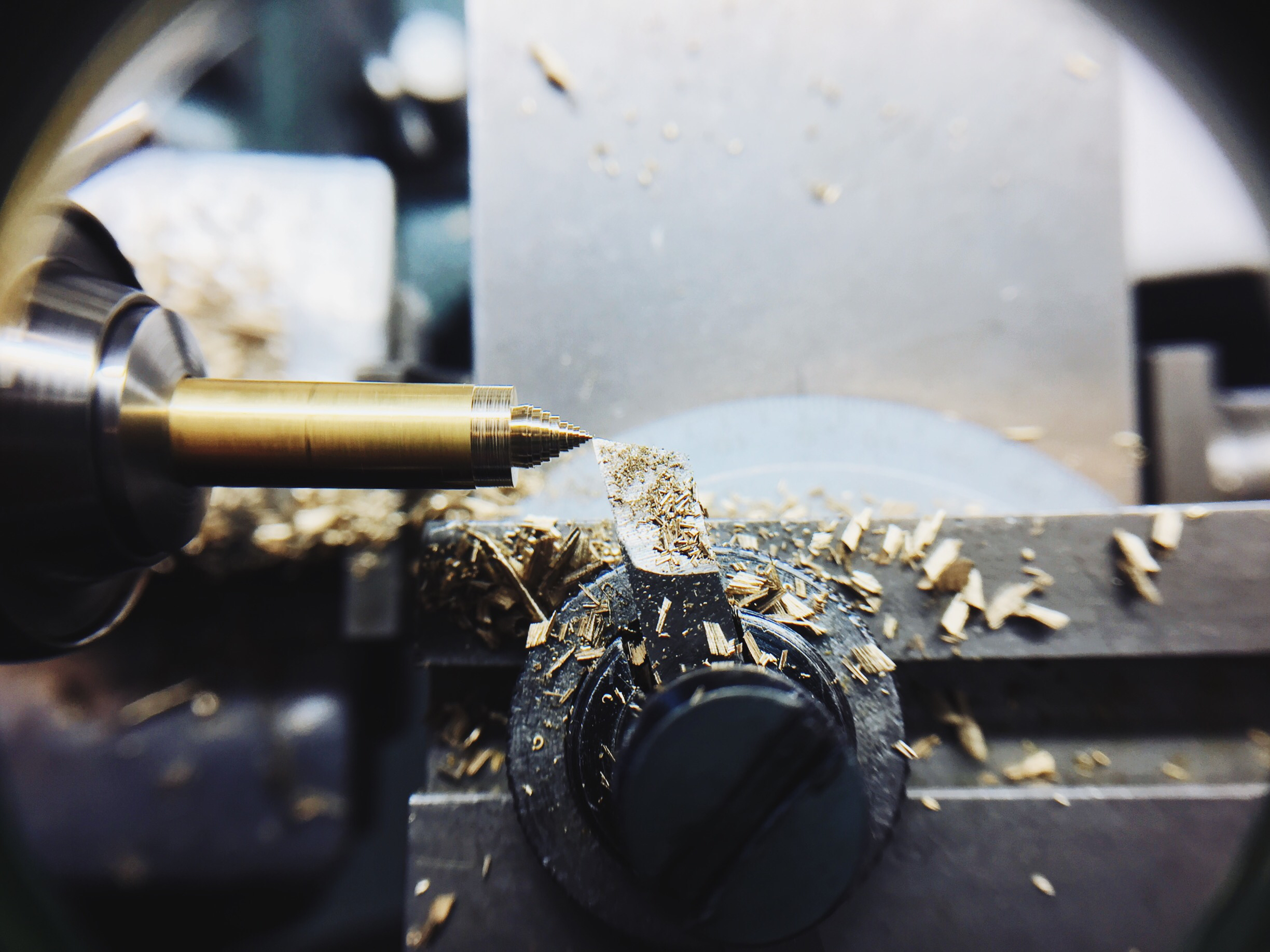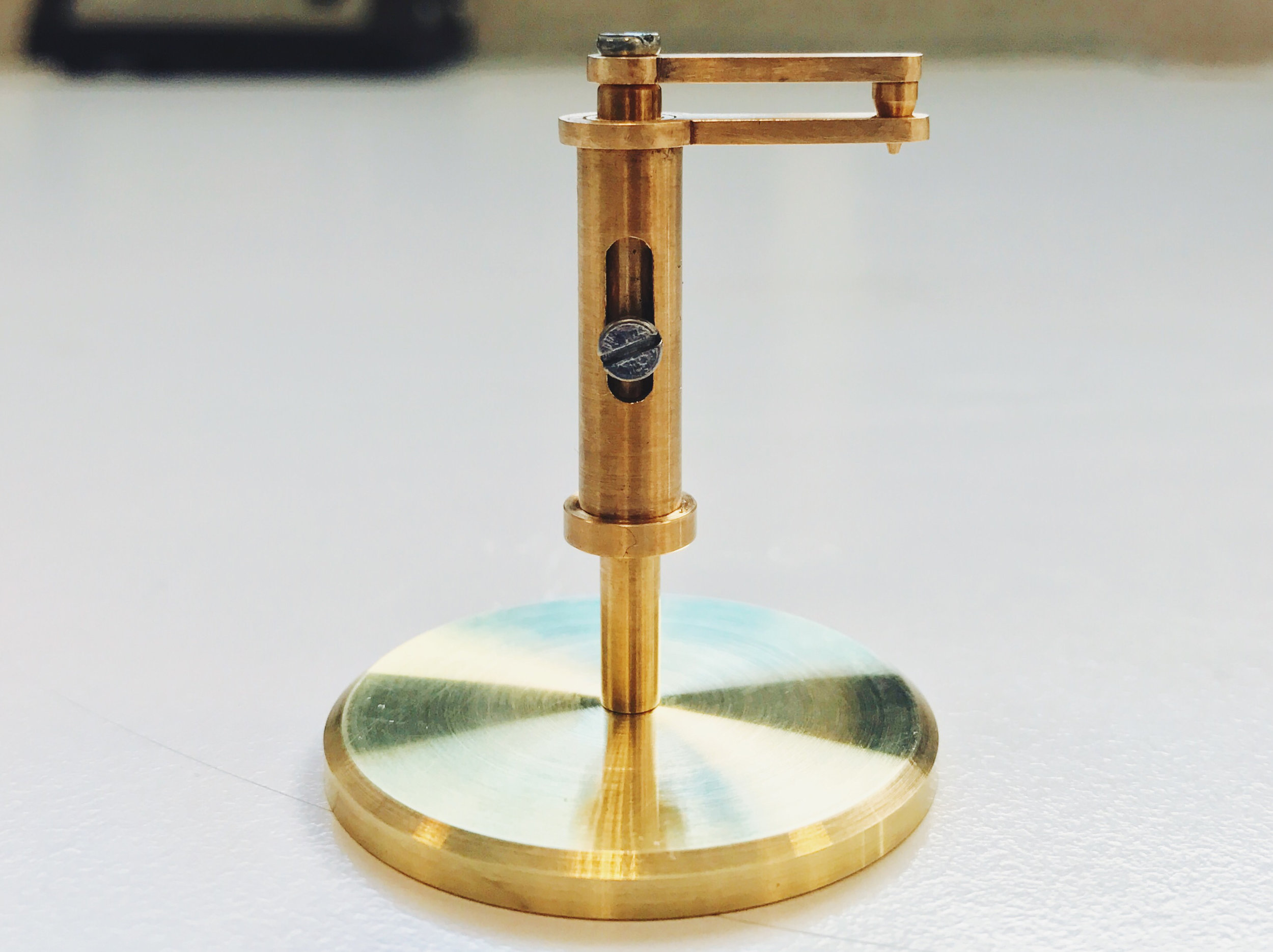Toolmaking: Take Two

Toolmaking and watchmaking really go hand-in-hand, especially when dealing with obscure antique watches which have parts that can be nearly impossible to source.
...Or when you're on a budget. Quality watchmaking tools are expensive, and while they're well-made, the price can be prohibitive for, say, a student.
This is a tool to adjust the depthing of the tilting pinion to the chronograph runner on the ETA 7750. The clutch lever has an eccentric screw that adjusts the engagement of the tilting pinion and chrono runner's teeth, and it's a critical adjustment in the service of that movement—any error and either the chronograph won't run or the entire movement will shudder to a stop.
The tilting pinion connects the entire chronograph to the movement's power source. It rotates in constant engagement with the 4th wheel on one end, and is tilted into or out of engagement with the chrono runner on the other, which drives the chronograph seconds hand.
The depthing should never really change from the factory settings, but things happen. ETA tries to discourage watchmakers from fiddling with the setting by making the eccentric an inverted screw head (the slot is an outtie, not an innie), so that's why we need to make this tool. Our tweezers and pin vises are simply too delicate for the amount of torque required to adjust the screw.
Our instructors encouraged us to make a tool as finely as possible for this exercise, so I modeled mine after our screwdrivers. The steel tip is friction-fit to the brass body on one end, and a steel bearing surface is friction-fit to the other, which holds a rotating endpiece. This design allows you to press down firmly with your forefinger on the endpiece, while rotating the tool with your thumb and middle finger. It's a tried and true design that helps prevent the tool from slipping and marring delicate screw tops or bridges.
Our nicest screwdrivers actually have minute ball bearings in their endpiece, but I don't have the equipment to manufacture something like that. A sleeve bearing works just fine, but in the interest of reducing wear, I made the bearing surface and the endpiece out of different metals—like-to-like materials have extremely high friction when they rub together, but even slight differentiation alleviates it dramatically.
Watchmaking student at the Lititz Watch Technicum, formerly a radio and TV newswriter in Chicago.






